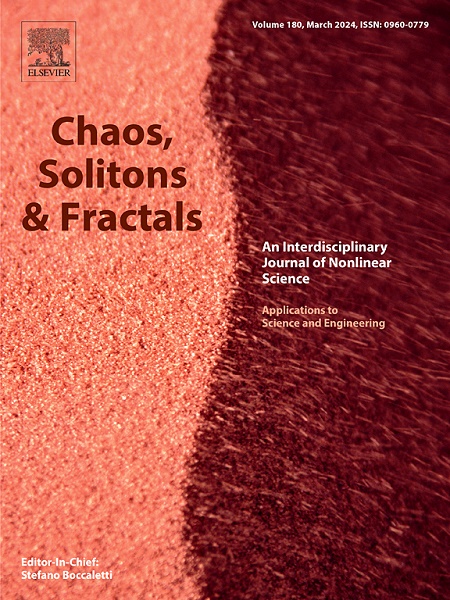Abundant exact solutions of the fractional (3+1)-dimensional Yu–Toda–Sasa–Fukuyama (YTSF) Equation using the Bell Polynomial-based neural network method
IF 5.3
1区 数学
Q1 MATHEMATICS, INTERDISCIPLINARY APPLICATIONS
引用次数: 0
Abstract
In this paper, we propose a novel neural network method based on Bell polynomials to solve the fractional (3+1)-dimensional Yu–Toda–Sasa–Fukuyama (YTSF) equation, which describes wave phenomena in dual-layer liquids and elastic lattices. The bilinear form of this equation is derived using the bell polynomial approach and combined with neural network, which conquers the inconvenience of traditional Bilinear neural network method. Based on this new approach, various neural network architectures were constructed, including “4-2-1,” “4-3-1,” and “4-2-2-1,” incorporating different activation functions to derive exact solutions such as the breather solution, lump solution, the superposition of rogue and lump solutions, as well as the superposition of double periodic lump solutions. Then the dynamic properties of these solutions are illustrated through 3-D plots, density plots, and line plots. In addition, the chaotic behavior of these exact solutions was studied by applying the Duffing chaotic system. More over, N-soliton solutions could also be reconstructed in the proposed neural network framework which has not been previously exhibited and reported to our knowledge. It paves the possible way to seek for new types of interaction between N-soliton solutions and other type solutions in future work.The successful application of the proposed method to solving the fractional (3+1)-dimensional YTSF equation demonstrates its effectiveness and shows its application potential in fields such as fluid dynamics, marine engineering, and meteorological modeling.
求助全文
约1分钟内获得全文
求助全文
来源期刊

Chaos Solitons & Fractals
物理-数学跨学科应用
CiteScore
13.20
自引率
10.30%
发文量
1087
审稿时长
9 months
期刊介绍:
Chaos, Solitons & Fractals strives to establish itself as a premier journal in the interdisciplinary realm of Nonlinear Science, Non-equilibrium, and Complex Phenomena. It welcomes submissions covering a broad spectrum of topics within this field, including dynamics, non-equilibrium processes in physics, chemistry, and geophysics, complex matter and networks, mathematical models, computational biology, applications to quantum and mesoscopic phenomena, fluctuations and random processes, self-organization, and social phenomena.
 求助内容:
求助内容: 应助结果提醒方式:
应助结果提醒方式:


